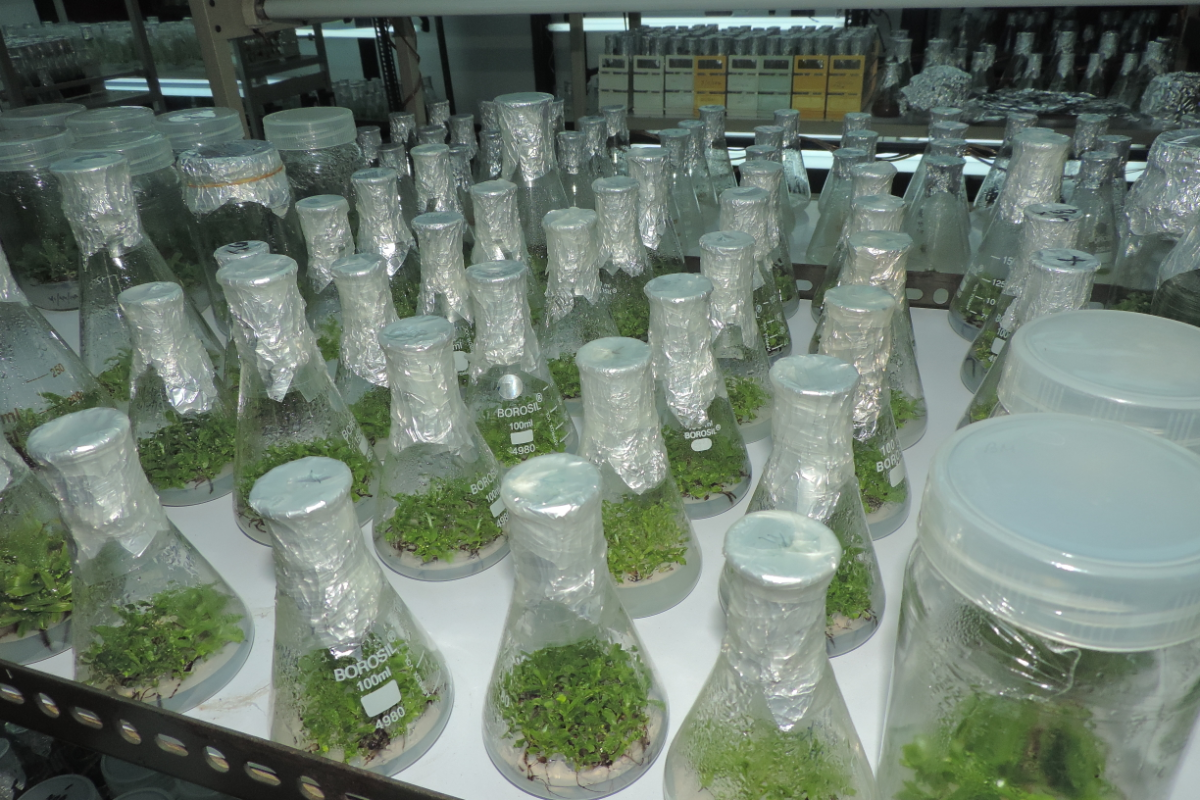Research Program
Cryptogams
Ex-situ Conservation
Ex-situ Conservation is one of the primary objectives of Botanical Survey of India (BSI). It is literally an ‘off site’ conservation policy that involves a couple of techniques linking the transfer of an objective species, experiencing various threats, away from its native habitat to a much safer abode, like in a Botanical Garden, Zoological Garden, Seed Bank or Gene Bank etc. The prime goal of this technique is to adequately backing conservation strategies by guaranteeing the existence of vanishing and threatened taxa/species and the maintenance of allied genetic diversity thereof. It further supports the idea of reintroduction of species in its natural or original habitat as the species under varying threat perception are preserved in safe custody till the casual factors threatening their survival in the wild have been return to normalcy and the reintroduction becomes possible.
The preamble of Article 9 of the Convention on Biological Diversity (CBD) stresses the need of establishing Botanic Gardens as a complementary approach to in-situ conservation (conserving plant / animal species in their natural habitat) practices to conserve threatened plant species and taxa of the country of their origin and to adopt appropriate measures to ward off their extinction. In order to commensurate with the directives of CBD, BSI being the custodian of the floral wealth of the country (even well before CBD came into existence BSI has initiated work in the same lane) has set up several well networked major and minor Botanic Gardens spread across different geographical belts of the country exclusively to conserves its vast, endemic and threatened flora. In some centres storage of seeds, conserving pollen, storage of plant shoot in low temperature (in vitro preservation) as well as tissue culture methods is being employed to this effect.
Botanic Gardens/ Ex-situ conservatories under the control of Botanical Survey of India are as follows:
|
Sl. No. |
Name of the Botanic Garden/ Ex-situ conservatory |
Targeted groups |
Total number of species conserved |
|
1. |
Acharya Jagadish Chandra Bose Indian Botanic Garden, Howrah – West Bengal. (The erstwhile Royal Botanic Garden, Calcutta and Indian Botanic Garden, Howrah.): Estd.1787, Area- 273 acres |
A national repository of plants. Conserves important plant species of India and other countries. Represents a miniature of the world flora. |
1400 species approx. |
|
2. |
Botanic Garden of Indian Republic (BGIR), Noida, Uttar Pradesh
Estd: 2002, Area- 163.79 acres
|
An under construction garden, showcasing region’s wide variety of native flora. Plants from 23 states of the country are conserved. |
900 species |
|
3. |
Barapani Experimental Garden, Barapani & National Orchidarium, Shillong, Meghalaya
Estd: 1966 Area: 25 acres |
Orchids, Nepenthes, Insectivorous plants, Medicinal plants, Arboriculture species and other endemic threatened plants of North East India. Including well equipped tissue culture laboratory for micro propagation and storage of germ plasm. |
750 species approx.. |
|
4. |
Experimental Botanic Garden, Andaman & Nocobar Island, Dhanikari Area: 70 acres |
Endemic and threatened plants of Andaman & Nicobar Islands |
250 species approx... |
|
5. |
Experimental Botanic Garden, Arunachal Regional Centre, Sankie view Area: 110 acres |
Endemic and threatened plants of Arunachal Pradesh |
200 species approx. |
|
6. |
Experimental Botanic Garden & National Orchidarium, Yercaud, Tamilnadu under Southern Regional Centre, Coimbatore. Area; 40 acres |
Endemic orchids of Western & Eastern Ghats, Endemic plants of Western Ghats and others. Tissue culture laboratory attached. |
1200 species |
|
7. |
Experimental Botanic Garden, Western Regional Centre, Mundhwa,Pune Area: 38 acres |
Endemic and threatened plants of Maharashtra, Goa and Karnataka etc. |
500 species |
|
8. |
Experimental Botanic Garden, Sikkim & Himalayan, Regional Centre, Gangtok |
Endemic and threatened plants of Sikkim, Himalaya and Orchids of Sikkim etc. |
200 species |
|
9. |
Experimental Botanic Garden, Northen Regional Centre, Pauri Area; 35 acres |
National Gymnosperm collection and other Endemic plants |
750 species |
|
10. |
Experimental Botanic Garden, Northen Regional Centre, Khirsu Area: 18 acres |
‘Nature reserve’ and other Endemic and threatened plants of the area |
|
|
11. |
Experimental Botanic Garden, Northern Regional Centre, Dehradun Area; 5 Acres |
Endemic and threatened plants of Uttarakhand and Uttar Pradesh. |
350 species |
|
12. |
Experimental Botanic Garden, Arid Zone Regioal Centre, Jodhpur Area:12 acres |
Endemic and Threatened plants of Arid regions of Rajasthan and Gujarat, Cactus collections. |
185 species |
|
13. |
Experimental Botanic Garden, Central Circle, Allahabad, U.P. Area: 7 acres |
Endemic and threatened plants of Uttarpradesh and Madhyapradesh etc. |
600 species approx. |

